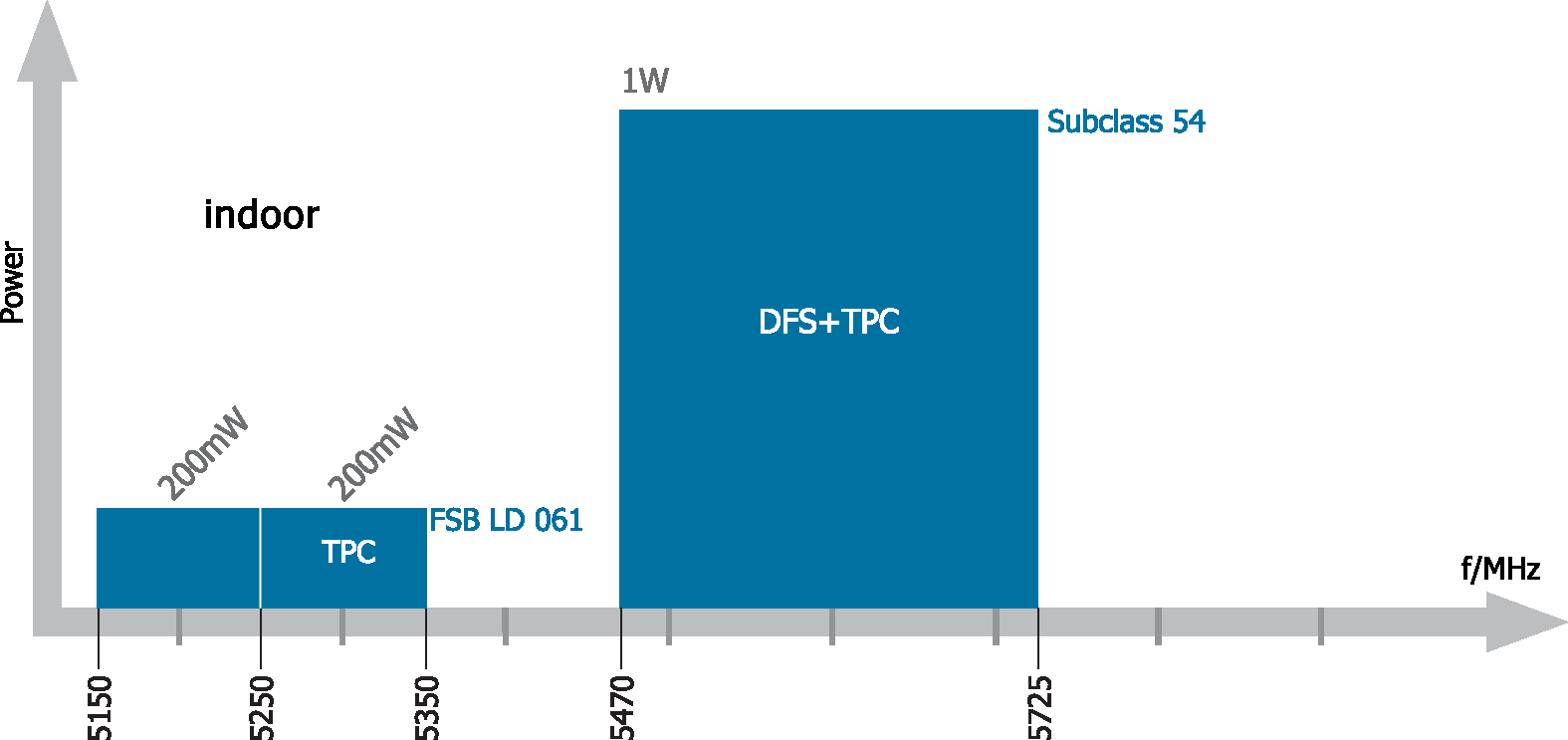5 GHz spectrum (WLAN)
The figure below provides a simplified overview of WLAN in the 5 GHz band. WLAN is also used in the 2.4 GHz-band.
5 GHz
(EN 301 893, e.g. IEEE 802.11a/n/ac)

Power in EIRP (Equivalent isotropically radiated power)
Typical WLAN devices support the channels 36 (5.18 GHz), 40 (5.20 GHz), 44 (5.22 GHz) and 48 (5.24 GHz); some devices also support the channels 100 (5.50 GHz) 104 (5.52 GHz) 108 (5.54 GHz), 112 (5.56 GHz), 116 (5.58 GHz), 120 (5.60 GHz), 124 (5.62 GHz), 128 (5.64 GHz), 132 (5.66 GHz), 136 (5.68 GHz) and 140 (5.70 GHz).
WLAN devices for the 5470–5725 MHz frequency band which comply with the Commission Decision on harmonisation of the radio spectrum for use by short-range devices (SRD Decision) are harmonised Class 1 devices of Subclass 54 as defined in the RTTE Directive (Directive 1999/5/EC, implemented in the Austrian Federal Act on Radio Systems and Telecommunications Terminal Equipment [FTEG]). These devices do not require notification under Article 6.4, and their operation is not subject to any special technical or administrative requirements. Moreover, a "exclamation mark" is not required in the CE marking for these devices.
As long as a WLAN hotspot is not offered to 3rd parties on a commercial basis, there is no obligation to notify the services to the regulatory authority (general authorization pursuant to §15 TKG 2003, AGG).
Contact: Addresses of the Federal Ministry of Agriculture, Regions and Tourism
Last update: Feb 10, 2022